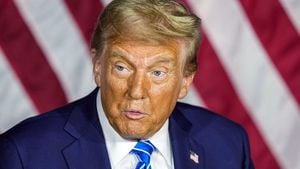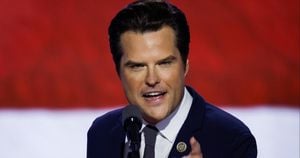Donald Trump returns to the White House with significant power after recent elections brought Republicans back to control of both the House of Representatives and the Senate. With Republicans projected to hold at least 53 seats in the Senate, Trump has considerable support to enact major changes to his policies and fill key cabinet positions with loyalists. This Republican trifecta marks the second time Trump is leading with similar power, echoing the early days of his first term starting back in 2017.
This time, he is already setting the stage to fill his Cabinet with familiar faces, having nominated key figures from the House, including Matt Gaetz as Attorney General and Marco Rubio as Secretary of State. Trump’s supporters view these appointments as necessary to restore the type of authority they believe he should have, especially after the unrest surrounding the 2020 elections.
Among the Republicans, Trump has appointed those who have high loyalty levels, signaling his intention to maintain control over national agendas. “We will make sure to enact President Trump’s agenda,” stated incoming Senate Majority Leader John Thune, who recently won the leadership vote against more radical candidates from the MAGA faction.
This shift indicates the Republican Senate may retain some degree of independence from Trump’s influence, but it’s clear they wish to appease him. Thune’s acknowledgment of the need to support Trump’s plans demonstrates the balancing act he intends to perform, assuring both the Trump loyalists and general Republican Senators of his leadership.
Trump’s strategy includes several proposed changes directly aimed at stimulating the economy and wrestling back control over immigration policy. Trump openly promised on the campaign trail to curb the influx of undocumented immigrants, commencing what he refers to as “mass deportations” on his first days back. His plans also spotlight the rollback of climate regulations enacted during Biden’s presidency.
With control of both legislative chambers, Trump is expected to have few roadblocks on his path to fulfilling promises made during his campaign. His allies believe he will swiftly fill vacancies and carry forward rapid confirmations for his appointees, leading to potentially swift legislative action on immigration policy and other issues.
While Trump is expected to pursue his agenda vigorously, the margin by which Republicans reclaimed leadership is razor-thin. Winning back the House, they hold approximately 220 seats to the Democrats’ 208. Despite this, there’s speculation about how effectively the new administration will govern, recalling struggles the previous Congress had with its own party's divisions.
The recent elections reveal not only questions about the effectiveness of the Trump agenda but also how resilient the opposition parties will be. House Minority Leader Hakeem Jeffries made it clear the Democratic Party would not go quietly, branding Republicans as extremists bent on undoing democratic institutions.
Meanwhile, significant challenges await the new government as it works to unify and push through comprehensive plans. The appointment of close allies to significant positions within the Cabinet raises concerns, as some people fear these individuals may promote only Trump’s views without considering bipartisan cooperation.
Having formed alliances within Congress already, Trump wasted no time leveraging the muscle of his supporters to strengthen his position. During the transition period, the emphasis has been on fulfilling the policies promised to voters, which he believes will rekindle the faith of the multiethnic electorate.
The Republican-controlled legislature consists of both newcomers and seasoned politicians who have long maneuvered through the upper chambers of Congress. Although Thune was elected as majority leader, it will be interesting to see how he balances the demands from the far-right faction alongside classic Republicans advocating for more traditional, negotiated governing strategies.
The new majority leader has also clarified his intention to uphold the integrity of the Senate’s legislative filibuster, emphasizing the necessity for bipartisan cooperation to get bills passed. This suggests there could be some hiccups along the way, and how the administration navigates these nuances could be pivotal for the next two years.
The presidential appointments, legislative goals, and the interplay of power dynamics within both chambers of Congress set the stage for what promises to be a radical and largely divided agenda, starting early next year.
House Speaker Mike Johnson, who held onto his position to lead the Republican conference, praised how hard the party worked to regain congress and set their agenda. His leadership might just be the glue to hold the party together as they maneuver through contentious debates expected over the next few sessions.
After two years of being stymied by narrow margins, Trump and his allies appear ready to take back control and quickly push forth their policies. Trump's reelection process and selection of allies point to seeking both stability and loyalty, but the real test will be how the organization evolves under such pressures.
The next few months will be telling, setting the tone for how effectively Trump can implement his vision with the new team he assembles.



